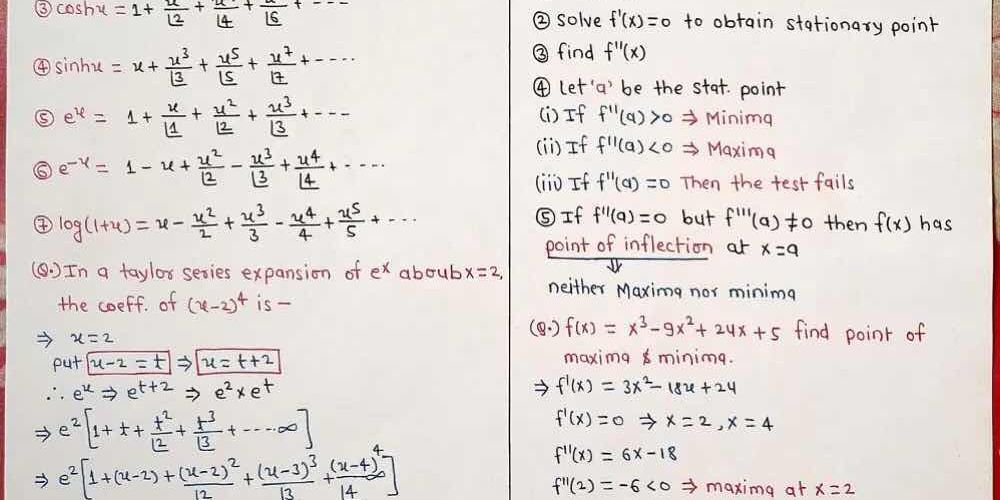In a Taylor series expansion of e^x about x=2, the coefficient of (x-2)^4 is -; solve f'(x)=0 to obtain stationary point, find f''(x), and y=f(x) where f(x)=x^3-3x^2+24x+5.

Understand the Problem
The question appears to be asking for an analysis related to Taylor series expansions and identifying stationary points and points of inflection for a given function.
Answer
No stationary points; point of inflection at \( x = 1 \).
Answer for screen readers
There are no stationary points for the function ( f(x) = x^3 - 3x^2 + 24x + 5 ). There is a point of inflection at ( x = 1 ).
Steps to Solve
- Identify the Function to Analyze
The function given is ( f(x) = x^3 - 3x^2 + 24x + 5 ).
- Find the First Derivative
To find stationary points, we first compute the derivative of the function: $$ f'(x) = 3x^2 - 6x + 24 $$
- Set the First Derivative to Zero
Next, we set the first derivative equal to zero to find stationary points: $$ 3x^2 - 6x + 24 = 0 $$
- Solve the Quadratic Equation
We can use the quadratic formula: $$ x = \frac{-b \pm \sqrt{b^2 - 4ac}}{2a} $$ Where ( a = 3 ), ( b = -6 ), and ( c = 24 ).
Calculating the discriminant: $$ b^2 - 4ac = (-6)^2 - 4(3)(24) = 36 - 288 = -252 $$
Since the discriminant is negative, there are no real solutions, meaning there are no stationary points.
- Check for Points of Inflection
To check for points of inflection, we need the second derivative: $$ f''(x) = 6x - 6 $$
Set the second derivative to zero to find points of inflection: $$ 6x - 6 = 0 $$
Solving gives: $$ x = 1 $$
- Analyze the Second Derivative
Now we can evaluate ( f''(1) ): $$ f''(1) = 6(1) - 6 = 0 $$
However, to confirm it's a point of inflection, we check the sign of the second derivative around ( x = 1 ):
-
For ( x < 1 ) (e.g., ( x = 0 )): $$ f''(0) = 6(0) - 6 = -6 < 0 $$
-
For ( x > 1 ) (e.g., ( x = 2 )): $$ f''(2) = 6(2) - 6 = 6 > 0 $$
Since the sign changes, ( x = 1 ) is indeed a point of inflection.
There are no stationary points for the function ( f(x) = x^3 - 3x^2 + 24x + 5 ). There is a point of inflection at ( x = 1 ).
More Information
The function is a cubic polynomial, and since the second derivative is zero at ( x = 1 ), it indicates a change in concavity, marking a point of inflection.
Tips
-
Confusing stationary points with points of inflection. Remember that stationary points are where the first derivative is zero, while inflection points are found using the second derivative.
-
Miscalculating the discriminant in the quadratic equation. Double-checking arithmetic here is crucial.
AI-generated content may contain errors. Please verify critical information